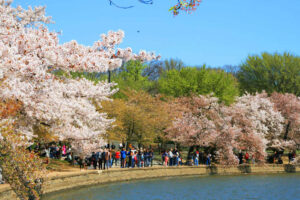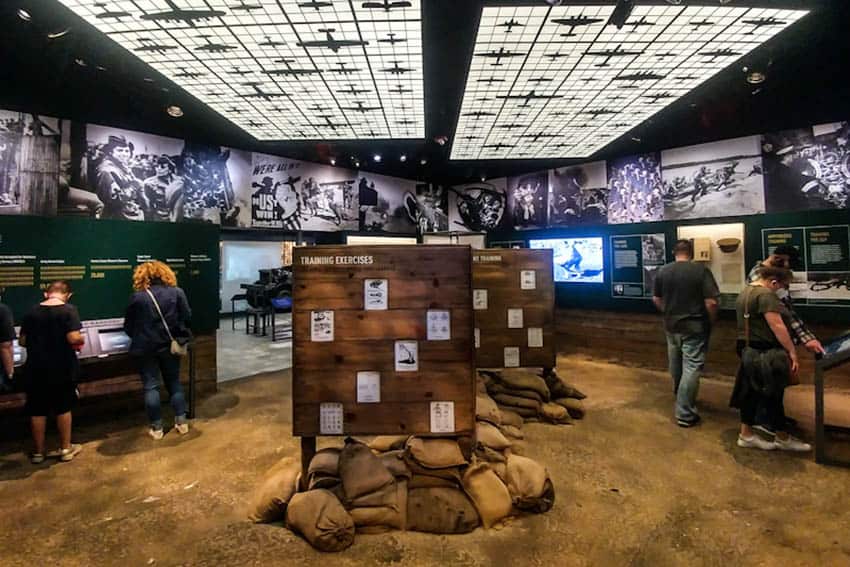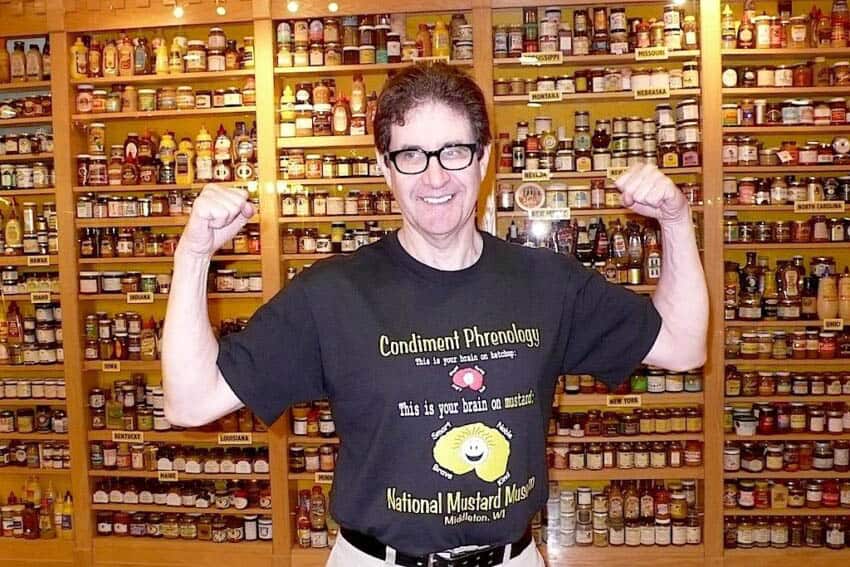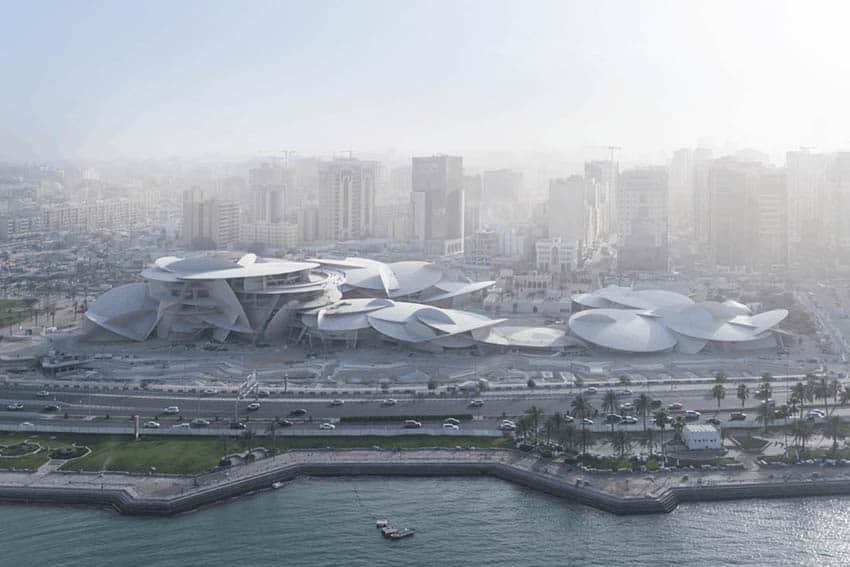
National Museum of Qatar features Artifacts from prehistoric to present.
By Kayla McMillan
After eight long years in the making, The National Museum of Qatar is officially open! It took years of patience to unveil Joichi Takada Architects’ wonderful interior designs.
The museum tells the story of Qatar, from prehistoric times to the present day, including ongoing political events such as the blockade imposed by Saudi Arabia and other neighbors.
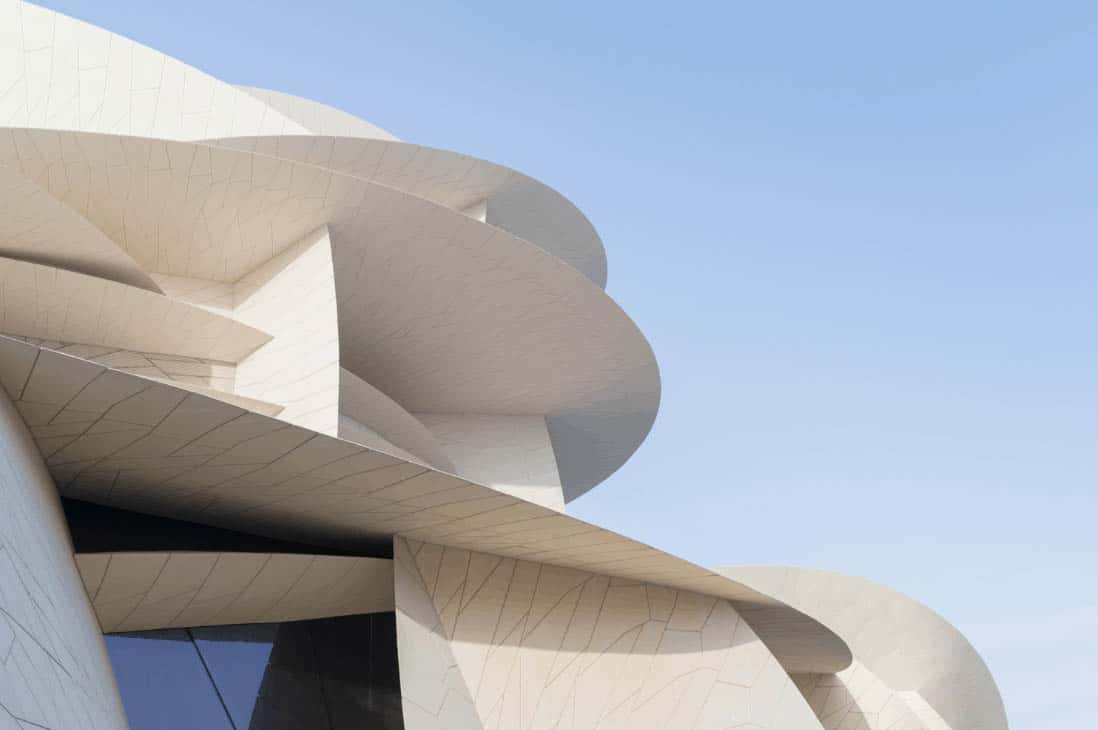
Koichi Takada’s interior design compliments the museum’s exterior architecture. French architect and Pritzker-prize winner, Jean Nouvel, created the satellite-like, disc-shaped exterior, which he emphasizes was inspired by the desert rose mineral formation.
Fly Qatar Airways in
Style and Comfort!
The National Museum of Qatar features beautiful galleries as they flow across the three ‘chapters’; Beginnings, Life in Qatar, and the Modern History of Qatar.
Visually Striking
Eleven galleries in total, this museum was designed to be immersive and visually striking.
Koichi Takada went as far as to design the museum shop, cafes, and restaurant as well. Each space features a distinct design with inspiration drawn from Qatari locations and artifacts.
In the museum shop, visitors can find timber walls that take their form from the Dahl Al Misfir (Cave of Light), which can be found in the heart of Qatar. Cafe 875 overlooks the museum’s main lobby which is inspired by the traditional Qatari gold jewelry.
The Desert Rose Cafe pays homage to the Qatari landscape with its sand-colored palette and collection of desert rose formations.
Once indoors, you’ll first encounter an escalator that leads you up to a second lobby and corridor. The windows are set deep within to avoid harsh light and heat while the walls deliver a tent effect. Behind the interesting artifacts, high-definition screens project historical video reenactments.
Qatar history, Falconry, and Runes
The gallery features tools and runes from prehistory, falconry gear, and pearl-fishing equipment from the early years of the 200-year-old nation.
It also holds extraction machinery from Qatar’s recent arrival as the world leader in liquid natural gas.

Finally, the enormous century-old palace once inhabited by the late Sheikh Abdullah bin Jassim Al Thani, is under restoration for visitors to see.
The museum itself is filled with artifacts and sculptures, including a recreation of a tent once used by nomadic people in Qatar.
Interestingly enough, no items are hung on the museum’s slanted walls but rather videos are projected onto them for visitors to watch. The museum also features galleries about Qatar’s oil and gas supplies.
Connection to Qatar Culture
Siegfred Magpile, from Al Khor, Qatar noted that “Walking through the halls of the museum led me to realize how lucky I was to see these wonderful creations. I felt more connected with the Qatar culture, gained more love for the country, and somehow felt that a part of me is destined to be here.”
At the entrance, petals fly outwards into archways so as you pass underneath, the arrangement appears to blossom right before your eyes.
Deep inside the new National Museum of Qatar is a platform displaying the components of a traditional bait al-sha’t (house of hair).
These are the tents Bedouins constructed and dismantled as they roamed around the peninsula

They were knit by women from the hair of black goats for the ability to protect them from harsh, unpredictable weather.
Staff Asking What He Thought
Peter W from Coupeville, Washington said, “As I wandered the galleries I was stopped several times by members of the staff asking what I thought, they were interested in my answers and in showing me special things I hadn’t noticed.
For example, there is a wall of touch screens that have hundreds of images in a moving display. Touch any image and it enlarges and freezes so you can study it at length.”
The National Museum of Qatar does an incredible job of teaching its visitors about the importance of architecture, from past to present, throughout its sculptures and exterior build.
More importantly, it projects and shapes the nation’s cultural identity, drawing on publicity to a tiny country that is still developing every year.
Qatar’s Pride
Magpile finished by saying, “I have gone to several places and attractions. This is really something extraordinary and distinct from all others. Truly Qatar’s pride. My pride.”
The museum is open 9 am – 7 pm Saturday to Thursday. Friday’s hours are from 1:30 pm to 7 pm.
General admission is QAR 50 ($15 US) for adults; QAR 25 ($7 US) for students and free for children under 16, Culture Pass Plus and Culture Pass Family Members, and visitors with disabilities.
General admission tickets include exhibitions within the museum and are valid for three consecutive days from the date of the first admission.
Address: Museum Park St, Doha, Qatar
- Discover Cambodia: Lavender Jeep Style - May 22, 2019
- Inside the Prison that Once Jailed Nelson Mandela - May 17, 2019
- Jeju Island Korea: the Beautiful Island of the Gods - May 14, 2019


